Today I had arranged to take a few fellow backpackers around the old Dutch colonial Kota area of the city. Getting to Kota is very easy from Six Degrees, you just walk down the road to Cikini station and take a commuter train to Jakarta Kota, the end of the line. Close to Cikini station is Jalan Surabaya, the flea market street of Jakarta, and so this was as good a place as any to start the days exploring. One side of Jalan Surabaya is full of shops that sell bric-a-brac such as old brass items, puppets, masks, ornaments, old vinyl records, and typewriters. It is an Aladdin’s cave of mostly junk and if you do want to buy something you will need your best haggling skills at hand.
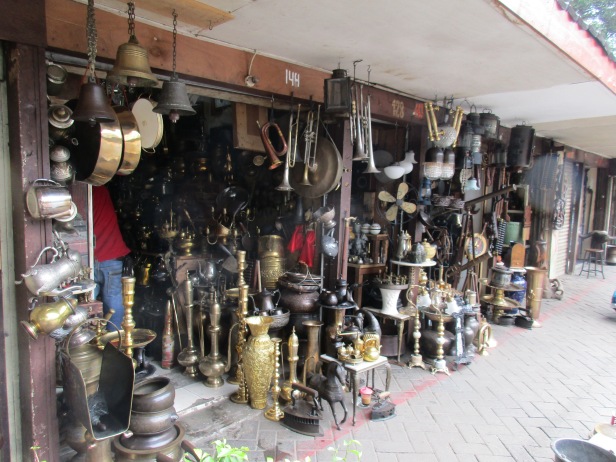
From Cikini station the train to Kota costs just 3000 Rp, although you do have to pay a refundable deposit of 10000 Rp for the plastic swipe card. The train to Kota is elevated and so you get a good view of central and north Jakarta, although the only real thing of interest is the Monas national monument next to Gambir station.
When you arrive at Jakarta kota station you walk out the exit and past a couple of banking museums into a pedestrianised area with lots of old Dutch buildings, some of which have been turned into cafes. You then find yourself in a huge open space, Fatahillah square, this used to be the heart of old colonial Batavia when the Dutch were in control of Indonesia. The square is bounded by old dutch buildings, a lot of which are now museums, the huge white building that covers one end of the square is the old city hall that is now the Fatahillah museum which details the history of the city of Jakarta. It costs 10000 Rp to enter and is mainly full of old colonial furniture.
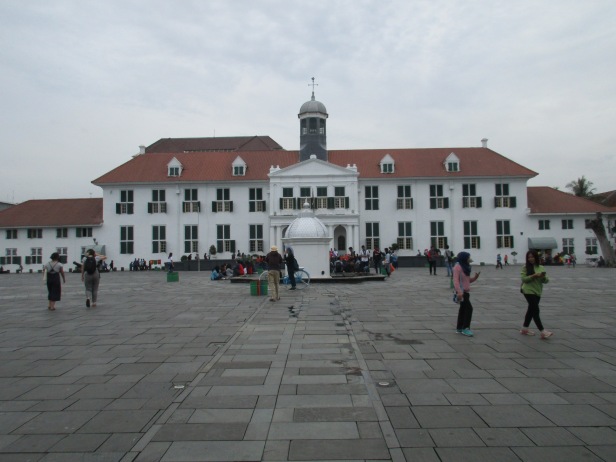
Directly opposite the Fatahillah museum on the other end of the square is a huge bronze cannon, the Canon si Jagur. This was captured from the Portuguese by the Dutch at Melaka and used to be exhibited in the garden at the Fatahillah museum, but now is mounted at the other end of the square. Tradition has it that it is also a powerful symbol of fertility due to the clenched fist symbol at the end. Next to the cannon is Cafe Batavia, an old Dutch building that is now a bar and restaurant with a very old colonial feel, kind of like Jakarta’s version of Raffles hotel. Food and drink is more expensive here but it’s worth it to soak up the old world charm, you really do feel like you are in an old movie.
After a cocktail and some chicken satay at cafe Batavia the next stop was to visit the wayang museum that is also on this side of the square, this museum is full of different types of the puppets that are used in Indonesian wayang shows, but unfortunately it was just about to close for the day. One of the workers here told us that if we wanted to see a wayang show then there was a free shadow puppet show around the corner in a wayang makers workshop and so we followed him to the small workshop where a puppet maker was working.
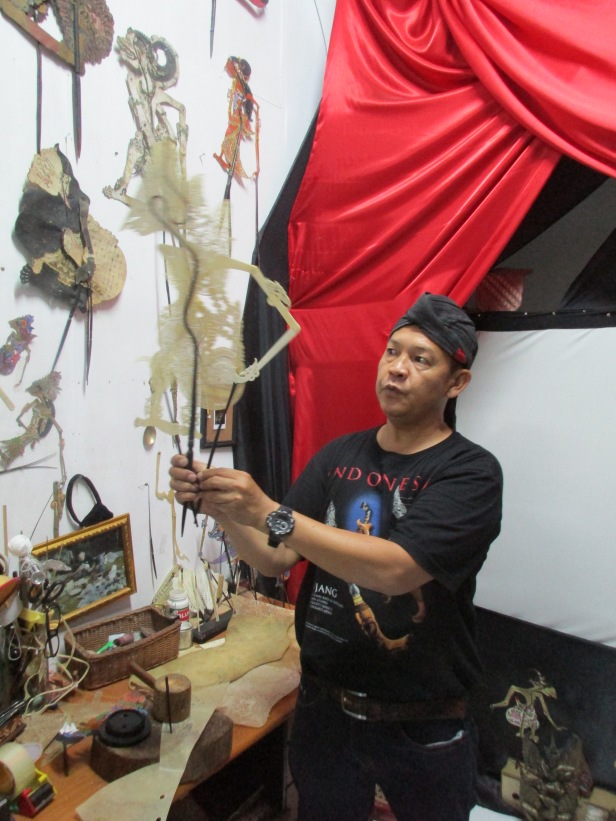
The puppet maker told us all about his craft and then gave us a shadow puppet performance from the Ramayana, which he narrated in English. It is a free show but he does ask for you to give a donation which is pretty fair considering you would pay about 100000 Rp in Ubud to see a similar show in Indonesian.
About a mile north of Fatahillah square is the old harbour of Sunda Kelapa, here dozens of old style pinisi schooners are loaded and unloaded ready to sail all over the Indonesian archipelago. If you ask the guys who work on them you might be able to climb up the steep gang-plank and have a look around one of the boats here as I have done in the past. Between the moored pinisi you will find a few old men with small sampans that will take you around the harbour for a small fee.
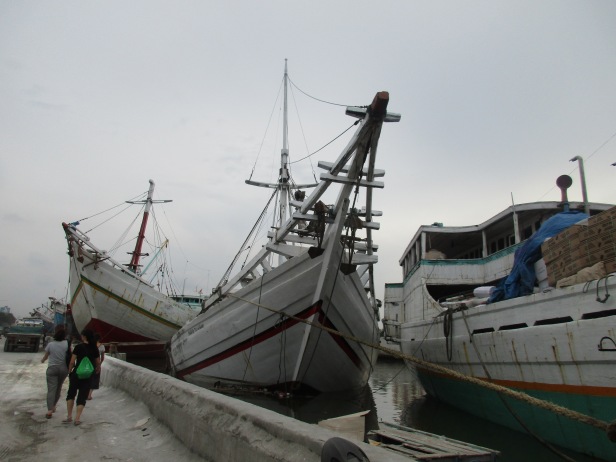
The cheapest we could find today was for 80000 Rp for the four of us, I have been on one of these boats in the harbour four times and this time was the furthest out to sea I have been, going around the two old Dutch lighthouses and right up to the breakwater so that the waves are almost splashing over the side of the boat, the water is black and filthy so you really don’t want it on you if you can help it.
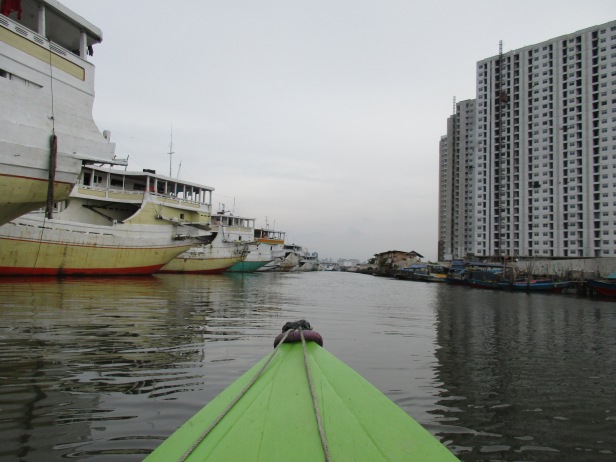
At the start of the harbour used to be a slum fishing village called Pasar Ikan, named after the fish market that was housed inside an old building there, I asked the boatman if we could be dropped off there as it was an interesting area to walk around with its shanty town-like houses on wooden stilts over the water, and its narrow alleyways full of children that would follow you around in amazement shouting Bule! Bule!. However, when we reached there it was clear that the area had been recently demolished as part of the clearance of the riverside slums to improve the flood defences of Jakarta and all that was now left of the area was rubble and debris.
Walking back to Kota takes you past old colonial buildings and also an Amsterdam style bridge over one of the dirty canals.
Directly south of Kota is the district of Glodok, the traditionally Chinese area of the city and the scene of some appalling anti-Chinese violence in the riots of 1998, in fact many buildings here are still burned out and derelict from then, with trees growing out of the ruins. One of the narrow side streets here is Jalan Kemenangan, which is full of Chinese shops and market stalls.
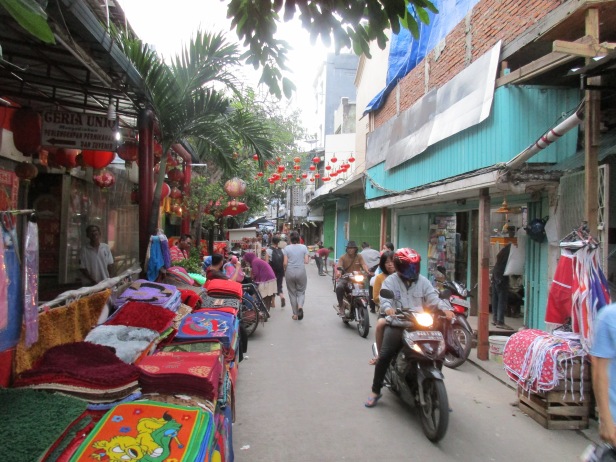
Also in this street is Jin De Yuan, the oldest Chinese temple in Jakarta, which was unfortunately badly damaged by fire in 2015 where it lost most of its ornamental carvings and you can still see all the charred beams where much of the roof was also destroyed.
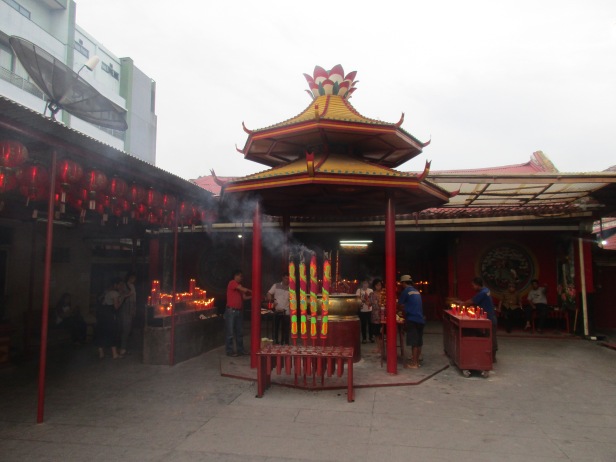
After Glodok you come to the area of Mangga Besar, infamous for being a red light district, although the roadside stalls selling Viagra and the like are now no longer around. It is also famous for food, with the main street of Jalan Mangga Besar being a well-known place to go and eat durian, as well as cobra satay.
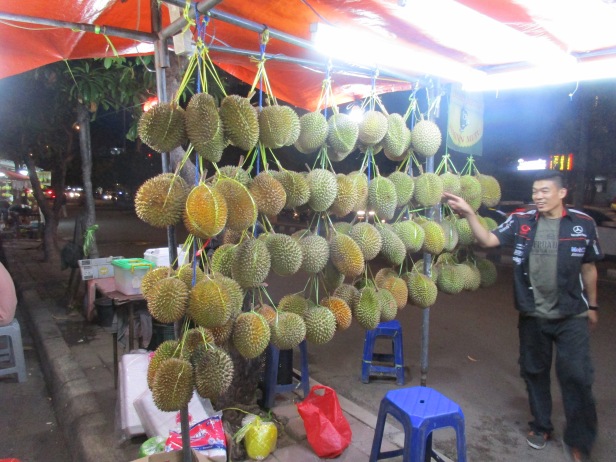
At the end of Jalan Mangga Besar is Mangga Besar station, and from here we took the train back to Cikini for another 3000 Rp.




